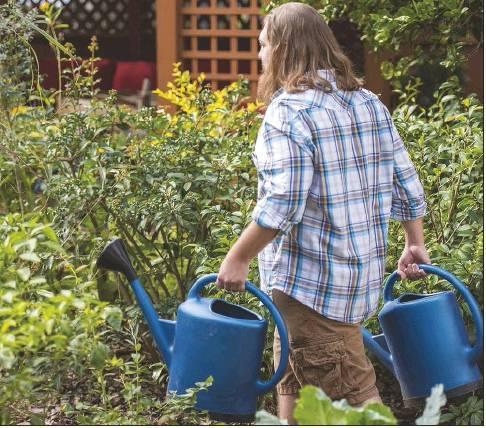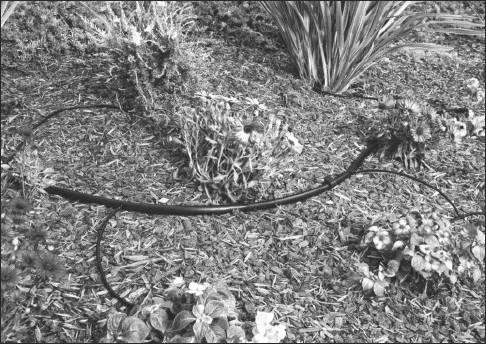Getting into Gardening
In last week’s article I mentioned that it was time to start thinking about the coming autumn season and the conditions that brings to our gardening. But judging from the email responses I got from that article, I understand that that can be a bit difficult for many of us when we are still having temperatures in the triple digits.
I get it. Struggling with high summer heat is no fun, and keeping your plants quenched and happy can feel like a non-stop battle. No matter if we are dealing with a drought or just with our hot, dry weather, conserving water is not only a matter of keeping our utility bills down but often becomes a matter of urgency and necessity. Knowing how to garden during these situations will protect your existing plants now, can help you grow food crops in low moisture environments, and can give you a better garden during normal growing conditions. Using water conserving gardening practices is also a socially and environmentally responsible approach to gardening.
We all know that one of the main needs of plants is water, but that doesn’t mean you have to be a slave to the watering can. Try some of the tips below to help you deal with drought-like conditions in your garden, so you can continue to enjoy good harvests no matter how high the temperature rises!
First off, prioritize your watering. When water’s precious (and when isn’t it these days) it pays to be prudent. Concentrate your watering where it’s needed: young seedlings to help them establish, salad leaves to stop them wilting, fruiting vegetables like tomatoes and anything growing in a pot.
Next think about balance and speed. Using a watering can? Try two – one for each hand. It will help you balance, and you’ll be able to water twice as quickly. If your water source is some distance from your beds, it also means less walking back and forth. None of us like being out in the heat either! Another option is to use a portable tank to cart water to where it’ll be dispensed. Ideally you initially made sure to set up your garden within a single hose distance to the spigot!
Thirdly, be kind, do not blast your plants with a powerful stream of water. A strong spray from a hose can knock plants about damaging leaves, stems, or roots. Not to mention that you could blast potting soil right out of containers. Get around this problem by simply placing the end of the hose in a watering can so that it fills as you pour. This means you can water carefully and precisely, enjoying the convenience of a hose – without wasting a drop of water!
Always water smart. By that I mean water from the bottom. Watering pots from the bottom, rather than the top, can save a lot of time – and water – in hot weather. Fill up a suitable-sized reservoir, adding any liquid feed you’d like to apply at the recommended rate. Now sink your pots into the water and simply walk away, leaving them to soak up the liquid for an hour or more. You can speed things along by adding a splash of water to the top of the pot before it’s left to soak. This technique ensures a truly thorough watering that makes very efficient use of your water. Oh, any water remaining in the reservoir can be used to hand water in ground or house plants - again, not wasting a drop.
Another smart watering tactic is to use a timer. An automatic irrigation system, connected to a timer, will take the strain out of watering. Set it to come on very early in the morning, say 5am, before things even begin to heat up. The best setups use drip irrigation or soaker hoses to deliver water right at the base of plants, near the roots. Some can even be fitted to water barrels, so you can make the most of any rainwater you’ve managed to collect.
Finally, as we prepare for our fall gardens, we need to consider protecting our newly sown seeds and seedlings from both drought and overheating. Heat, drought, and inconsistent watering practices can play havoc with seedlings, hampering germination and causing young plants to struggle. That is not what we want. In hot, dry conditions getting seeds to germinate can be tricky, particularly those of cool season crops such as lettuce, broccoli, carrots, snow peas, and spinach. The solution is to remember that once a seed begins to germinate it must remain moist or it will die. So, you must find them the cool, moist surroundings they crave. This is easier if you use movable trays in which to start your seeds. You can move them into the morning sun early in the day, and then later into a shaded area as the sun reaches its fury. But when direct sowing into the garden bed we can’t do move them so we must employ a different tactic.
In the planting bed, score an inch deep (or so) line in the soil where you plan to plant your seeds. Water along that marked-out area prior to sowing. Allow the water to entirely soak into soil, then fill it again and allow it to soak in once again. Now it is ready to sow your seeds. Once you’re done sowing, cover the seeds back over and gently moisten the topsoil but don’t water thoroughly again until after germination. Having said that, be sure to water if the soil begins to dry out too much before the seeds germinate. This can be a bit tricky but if you need to water, just water gently so as not to disturb the soil and seeds too much.
Young seedlings, and cool season crops in general, perform better under the protection of some shading in hot summer conditions. Prioritize shady areas for crops that prefer cooler conditions, such as salad leaves. You can use taller crops to shade shorter ones, but in scorching weather drastic action such as shade cloth, may be needed. Shade cloth is designed to cast just enough shade to keep your plants happy in severe heat – and it’s easily removed when the weather turns cooler.
Of course, mulches are a must during any central Texas summer, drought or not. That is why I always recommend applying a mulch of organic material such as compost, leaf mold, or even dried grass clippings. This extra layer serves a few purposes: it shades the soil from the sun, helping to keep it cooler, and it acts as a lid on the soil, dramatically reducing water evaporation.
When you apply mulch, thoroughly soak the ground before adding your mulching material. If it’s exceptionally dry, water again a few hours later to recharge all that valuable soil moisture. Only then should you lay the mulch so it’s at least an inch or two thick around your plants. Fruit trees, canes and bushes can be mulched with chunkier materials such as bark chippings, or fibrous materials like straw. Again, take care to water well before laying it. Mulches may not be very high-tech, but they are incredibly effective in a hot Texas summer.
I hope this article makes it easier to start thinking about a fall garden. I also hope you’ve found some of these ideas handy. They’ll all save you time while ensuring your plants stay in the best condition possible rewarding you with a beautiful healthy garden even in the most extreme of conditions.





